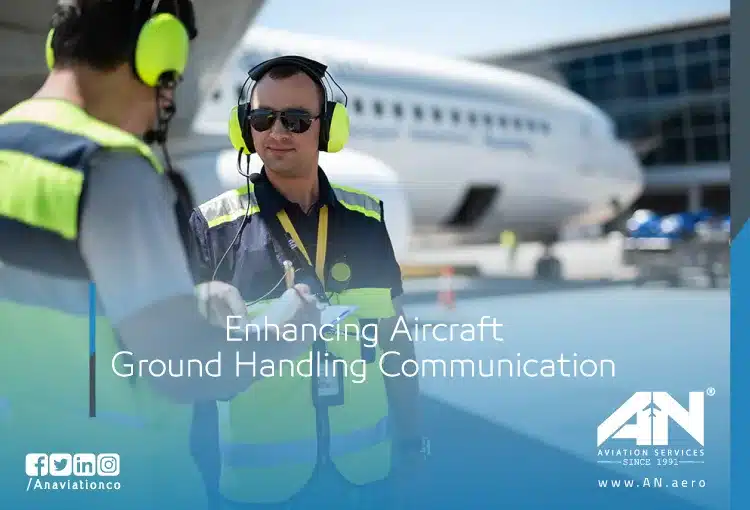
When it comes to the aviation industry, the margin for error is razor-thin. Among the various factors ensuring smooth operations, ground handling communication plays a pivotal role. Ground crew, air traffic control, and flight crew must synchronize their efforts to guarantee that the aircraft is ready for its next journey. Effective communication minimizes risks, optimizes efficiency, and ensures seamless ground operations. This blog delves into the importance of ground handling communication and explores how technology and teamwork elevate safety and operational success.
The Role of Ground Handling Communication
Effective ground handling communication ensures that every process on the tarmac operates without a hitch. From loading cargo to refueling, a well-coordinated ground operation depends on clear dialogue between ground crew, aviator personnel, and the flight crew. Miscommunication can lead to delays, safety hazards, or errors in flight planning.
One critical aspect of communication is maintaining situational awareness. Ground personnel and the flight deck crew must remain in sync during operations like boarding, deboarding, and cargo handling. Systems like the interphone system and radio communication tools are vital to ensuring instructions are clearly conveyed and understood.
Communication Tools in Ground Handling
Modern aviation relies on sophisticated tools to enhance ground communication, ensuring smooth operations:
- Radio Communication: Radios are the lifeblood of ground operations. From air traffic control relaying taxiing instructions to ground crews directing vehicles, radios ensure all stakeholders are on the same page. For example, baggage loaders and fuel truck drivers coordinate via radio communication to ensure no overlap occurs during high-stakes moments.
- Interphone Systems: Interphone systems allow direct communication between the flight crew in the cockpit and the ground crew on the tarmac. These systems are used to communicate critical tasks like preflight checks, maintenance updates, and gate changes.
- Ground Service Vehicles and Signaling: In addition to radios, ground crews use visual signaling, such as hand gestures or signal wands, to guide aircraft during pushback, parking, or loading.
- Digital Ground Handling Solutions: Automation and digital tools have revolutionized ground communication. Mobile apps and ground-handling software allow aviator personnel to track load status, flight schedules, and safety protocols in real time. These tools eliminate miscommunication, reduce errors, and improve situational awareness.
Best Practices for Effective Ground Handling Communication
Clear and Concise Messaging: Avoid jargon and ensure all messages are direct. This is especially crucial in high-pressure situations like emergencies.
Situational Awareness: Both ground and flight crews must remain vigilant, ensuring the safety of personnel and aircraft during ground operations like loading and unloading.
Cross-Training Teams: When ground and flight crews understand each other’s responsibilities, communication improves, leading to fewer delays or errors.
Regular Updates: Real-time updates from air traffic control ensure smooth ground operations. Teams must prioritize delivering accurate, real-time data to avoid missteps.
The Importance of Technology in Communication
With the aviation industry growing rapidly, technology is bridging the gap between ground and flight operations. Digital platforms integrate data from the flight deck and ground crews, enabling real-time updates on tasks like fueling, baggage handling, and catering. These systems are not only cost-effective but also improve operational efficiency.
Moreover, automated solutions help ground crews monitor multiple aircraft simultaneously. With tools like flight planning software, ground personnel can instantly adjust schedules, ensuring aircraft are serviced quickly and safely.
Challenges in Ground Handling Communication
Despite technological advancements, challenges remain in ensuring efficient ground handling communication:
- Noise Levels: Aircraft engines and bustling airport environments can make it difficult to hear instructions, requiring crews to rely on visual cues or advanced noise-canceling headsets.
- Language Barriers: In international airports, ground crews often comprise diverse nationalities. Standardized aviation terminology helps bridge these gaps, but training is essential to avoid misunderstandings.
- Human Error: No matter how advanced the systems are, human errors like mishearing instructions or forgetting tasks can still occur. Repetition of commands and acknowledgment protocols can mitigate such risks.
Enhancing Safety Through Communication
The ultimate goal of ground handling communication is to ensure safety for passengers, crew, and ground personnel. Miscommunication during critical phases, such as aircraft taxiing or loading and unloading, can lead to severe consequences of aircraft damage or delays.
Jet blast, for instance, is a significant hazard during ramp operations. Without clear communication between ground crews and flight crews, this phenomenon could pose risks to ground vehicles or other nearby personnel. Similarly, improper coordination during ramp safety procedures can jeopardize the safety of everyone involved.
Conclusion
Ground handling communication remains a cornerstone of safe and efficient airport operations. By combining advanced tools like interphone systems, radio communication, and digital platforms with clear protocols and training, the aviation industry can ensure that every aspect of ground operations runs smoothly. As technology evolves, it will continue to enhance coordination, minimize risks, and create a safer environment for passengers, crews, and ground staff alike.

